| Day 6 Lhasa ( B,L ) |
| Visit Potala Palace in the morning, only limited visitors allowed per day. Free time on Barkhor Street after an interesting tour in Jokhang Temple. |
| The Barkhor Street | The Barkhor Street is Lhasa's inner pilgrim circuit shaped roughly like an octagon that runs around the Jokhang. The circuit is lined with markets, shops, stalls and street vendors providing every conceivable item a Tibetan could need. The best place to start the circuit is right outside the Jokhan…… | | The Jokhang Temple | The Jokhang Temple is the spiritual centre of Tibet - a destination for millions of Tibetan pilgrims. The oldest part of the temple dates back to the 7th century AD - being one of the two temples built by King Songsten Gampo to house the statues of the Buddha that his two foreign wives brought to Ti…… | | The Potala Palace | The Potala Palace is a landmark of Lhasa and Lama Buddism. It is a 13 storey and 1000 rooms' palace and once winter residence of the Dalai Lama. The construction of the present structure began during the reign of the fifth Dalai Lama in 1645 and took more than 50 years to complete. |
|
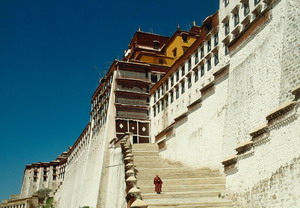 |
| [ Optional ] Tibetan Family Visit: Every Tibetan family has been either directly or indirectly affected by the Chinese, Indian and Nepal culture. Family life is one of the most interesting attractions during your stay in Tibet. Common Tibetan people welcome you to their homes, greet you in their traditional way and entertain you with their typical food. |
|
| Day 7 Lhasa ( B,L ) |
| The Drepong and Sera are the two most famous Tibetan monasteries in Tibet. You have the chance to have a close touch to the people living there. |
| The Tibet Museum | The Tibet Museum, located in the southeastern corner of Norbu Lingka, Lhasa, is the first of its kind in Tibet to be provided with the latest in equipment and facilities. The Tibet Museum was completed and opened in October 1999. | | The Drepong Monastery | The Drepong Monastery: a cluster of white buildings resembling a riceheap, against the backdrop of Mount Gyenbuwndze. Founded in 1416, Drepong is the biggest and richest monastery in Tibet that was divided into four Tantric colleges - that specialised in different branches of knowledge. | | The Sera Monastery | The Sera Monastery lies on the northern edge of Lhasa at the base of Tatipu Hill. 'Sera' means 'merciful hail' denoting its rivalry with the 'Rice Heap' (Drepong) since hail destroys rice. Sera was smaller than Drepong with about 7,000 monks but was very rich and comparable in power. |
|
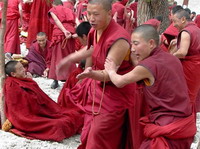 |
| [ Optional ] Lhasa Carpet Factory: Lhasa Carpet Factory is a factory south of Yanhe Dong Lu near the University of Tibet in Lhasa the capital of Tibet. It produces traditional Tibetan rugs. The highland of Tibet is the actual home of the oriental carpets. By visiting Carpet Factory you will have a general idea of how carpets are produced. |
|
| Day 8 Lhasa ( B ) |
| Transferred to take 36 hours train (soft sleeper) to Xian. Stay overnight on the train. Train No.: T 28 (leave Lhasa at 08h30, arrive Xian at 20h28 next day) |
| Qinghai-Tibet Railway | The highest point of the Qinghai-Tibet Railway is the Tanggula Mountain Pass, which is at an altitude more than 5,000 meters above sea level. At this point passengers may experience slight high-altitude-reaction symptoms, such as headaches, but they soon pass as the train heads downward. |
|
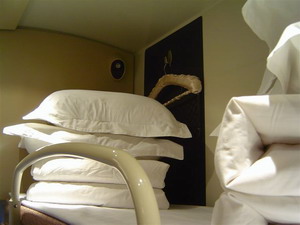 |
| [ Optional ] Express train T28 Lhasa to Beijing: It departs from Lhasa at 09h20 on Day 1, arrives at Beijing West Train Station at 07h34 on Day 3. You need to stay 46 hours on the train. The train passes Xian at 20h22 on Day 2, many passengers end their train journey here, visit the Terra Cotta Warriors. |
|
| Day 9 Xian ( ) |
| Arrive at Xian at 20h28 in the evening. Pikup from the train station and transfer to the hotel in Xian. |
| Xian | Xi’an, named “Chang’an” in ancient time, is the ancient capitals of 13 dynasties, dating back to 3100 years ago. It’s the starting point of the Silk Road and honored as the World Historic City by UNESCO in 1981. Hence, it’s the first choice for those Chinese civilization lovers. |
|
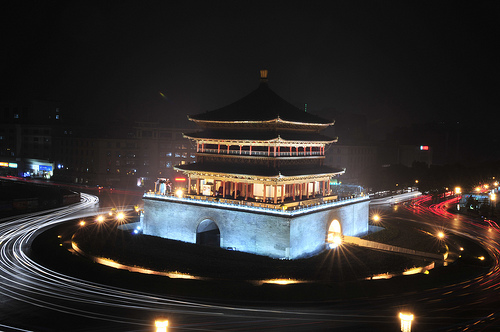 |
| [ Optional ] Muslim quarter: The Muslim Quarter features a mix of Chinese and Islamic cultures. It wins the reputation for the alley lined with market stall and the tasty snack food. Meanwhile, it is a good place to head for when looking for those hard-to-find souvenirs. |
|
| Day 10 Xian ( B,L ) |
| The highlight today is the visit to the Terra Cotta Warriors. |
| Xian Bell Tower | Built in 1384 A.D, the Bell Tower boasts a history of over 600 years. It is the largest and best-preserved of its kind in China. Visiting the Bell Tower, you can still see the Big Iron Bell which was made in Ming Dynasty, 2,500 kilograms in weight. | | Big Wild Goose Pagoda | It was built in 652 during the Tang Dynasty and currently boasts height of seven stories. It’s said that Master Xuan Zang built this pagoda to house the Buddhist scriptures and relics he had brought back from India. | | Terra Cotta Warriors and Horses Museum | Terracotta Warriors is the underworld terracotta army of Emperor Qin Shihuang (the first unifier of China, 259BC-210BC). It’s reputed as the Eighth Miracle of the World. Now the Terracotta Museum consists of Pit 1, Pit 2, Pit 3 and Pit 4 as well as the Hall of the two bronze chariots and horses. |
|
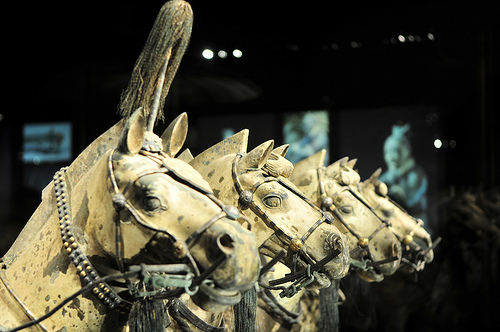 |
| [ Optional ] Tang Dynasty Dinner Show: The Tang Dynasty show has absorbed all the best music from the past dynasties and that of western regions and other countries. It vividly reflects their thriving economy, the friendly relationship between Tang and its neighboring countries, and the daily life of the Tang people. |
|